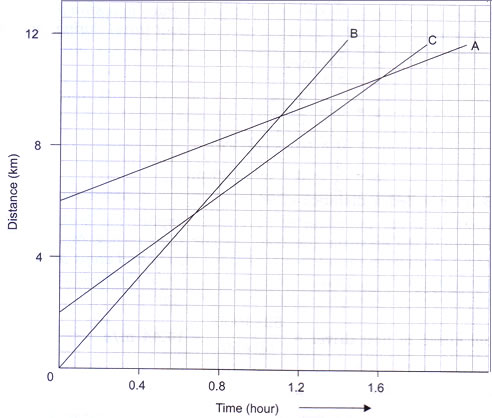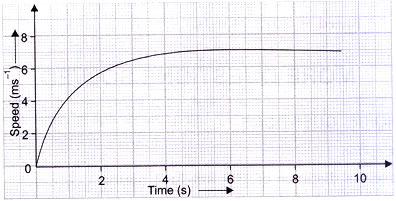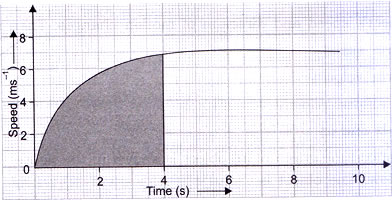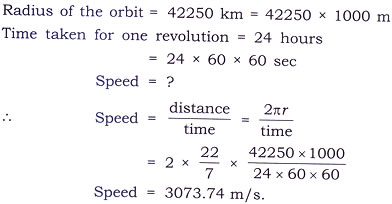Question: Figure given below shows the distance-time graph of three objects A, B and C, study the graph and answer the following questions.
- Which of the three is travelling the fastest?
- Are all three ever at the same point on the road?
- How far has C traveled when B passes A?
- How far has B traveled by the time it passes C?
Answer:
- B is travelling fastest.
- No, three lines do not meet at any point.
- When B passes A, C in at a distance approximately 8 km from origin.
- By the time B passes C, it has traveled 5.5 km.
Question: A ball is gently dropped from a height of 20 m. If its velocity increases uniformly at the rate of 10 ms-1, with what velocity will it strike the ground?
Answer:
Question: The speed-time graph for car in shown in the figure given below.
(a) Find how far does the car travel in the first 4 seconds. Shade the area on the graph that represents the distance traveled by the car during the period.
(b) Which part of the graph represents uniform motion of the car?
Answer: (a) The distance traveled by car in the first 4 seconds is approximately 12 m.
(2) The uniform motion of the car is shown after 5.5 s.
Question: State which of the following situations are possible and give an for each of these:
- an object with a constant acceleration but with zero velocity
- an object moving in a certain direction with an acceleration in the perpendicular direction.
Answer:
- Free fall due to gravity
- Object moving in a circular path
Question: An artificial satellite is moving in a circular orbit of radius 42250 km. Calculate its speed if it takes 24 hours to revolve around the earth.
Answer:
 Class Notes NCERT Solutions for CBSE Students
Class Notes NCERT Solutions for CBSE Students









